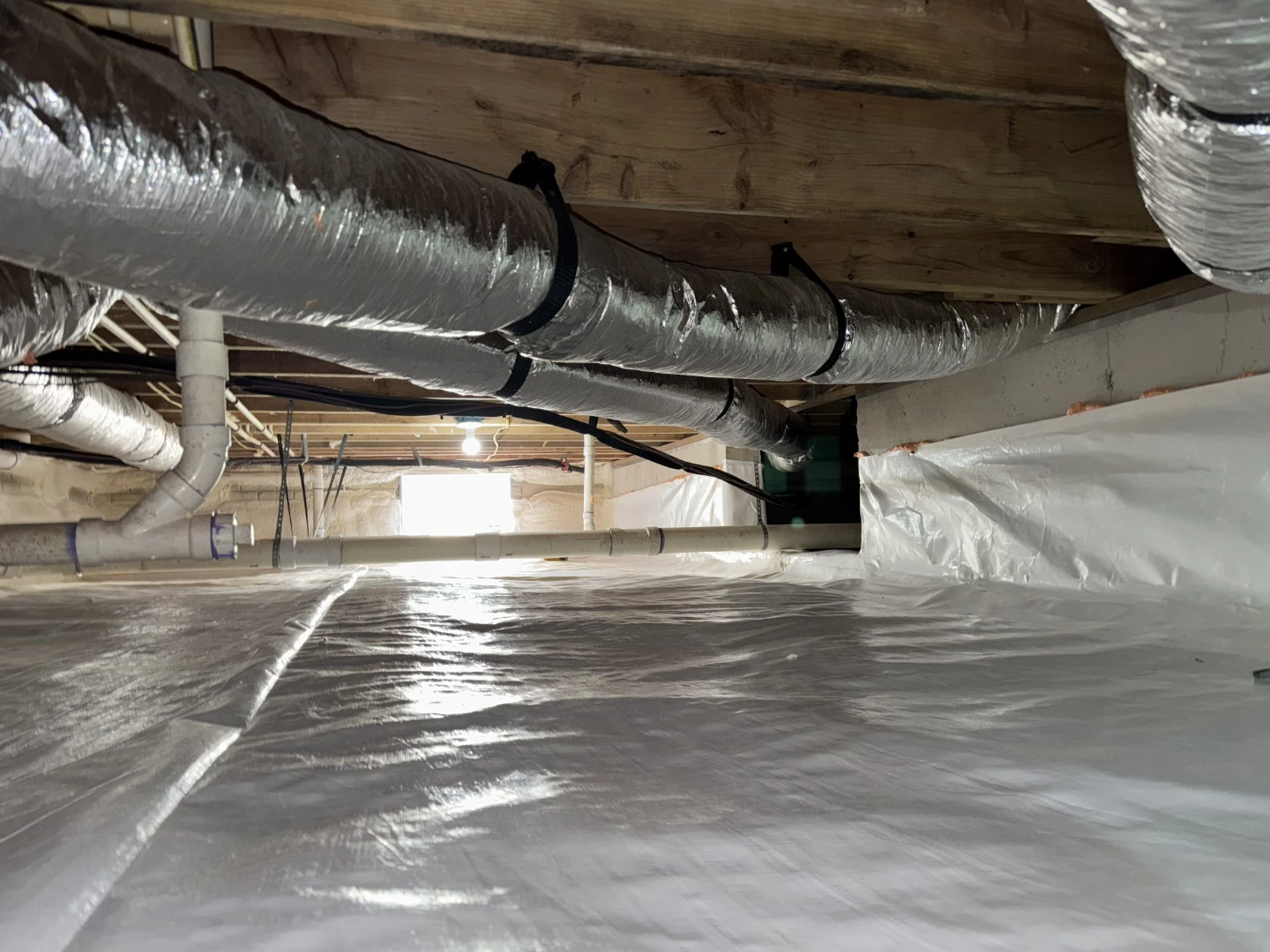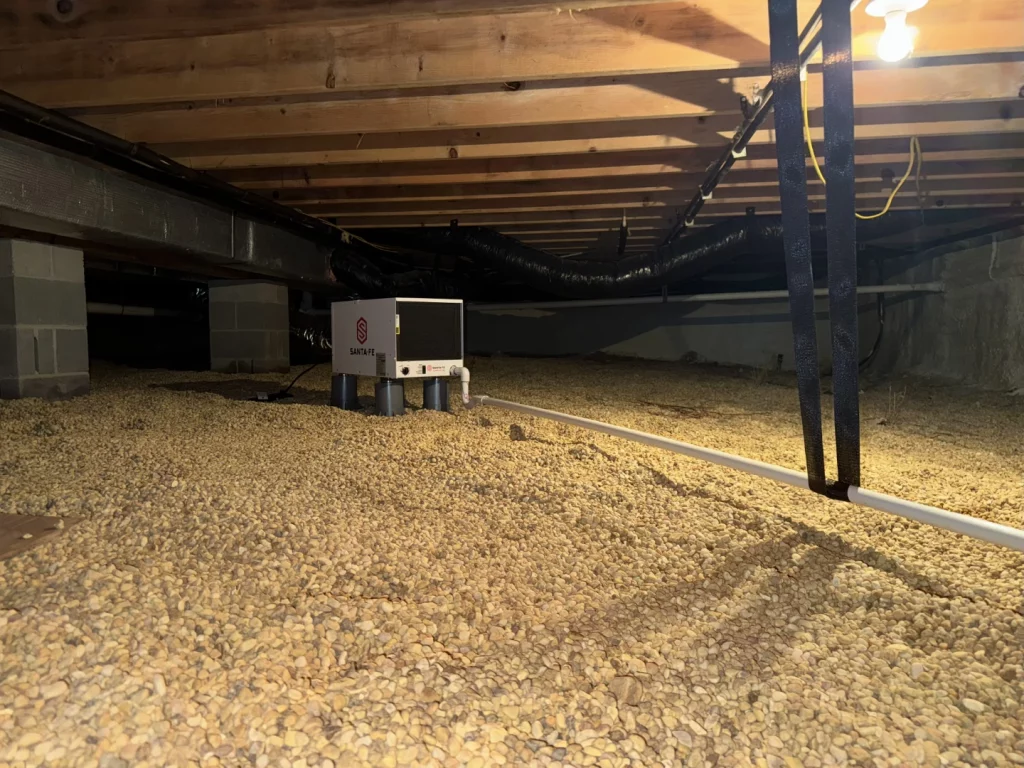
Crawl space encapsulation deters rodents by creating a complete, sealed barrier that eliminates their primary entry points and makes the environment uninhabitable for them. The process involves lining the floor and foundation walls with a heavy-duty, puncture-resistant vapor barrier, sealing all seams and joints, and closing off foundation vents and other openings. This removes the three things rodents seek: easy access, moisture, and shelter. By transforming a damp, dirty, and accessible crawl space into a clean, dry, and sealed part of the home, encapsulation effectively tells rodents to find another place to live.
This comprehensive guide explains the mechanics behind encapsulation as a pest control method, drawing on years of experience in conditioning and protecting homes. It provides a detailed breakdown of how rodents get in, why traditional crawl spaces attract them, and how a properly sealed space solves the problem permanently.
A traditional dirt or gravel crawl space is an open invitation for rodents like mice and rats. These areas are dark, sheltered, and often damp, creating an ideal habitat. Rodents are attracted to these spaces for several specific reasons.
First, exposed earth floors retain moisture, which supports insect populations, a primary food source for some rodents. Research from the U.S. Environmental Protection Agency highlights that rodents are constantly searching for food, water, and shelter, all of which are abundant in a typical vented crawl space. The moisture also contributes to wood rot and mold, which can soften structural elements and make it easier for pests to chew through.
Second, foundation vents, originally intended for ventilation, serve as direct entryways. According to the University of California’s Statewide Integrated Pest Management Program, a young mouse can squeeze through a gap smaller than a dime (about 1/4 inch), and rats can get through openings the size of a quarter. Gaps around pipes, wiring, and along the sill plate where the house frame meets the foundation are other common access points.
Finally, the clutter and debris often stored in crawl spaces provide excellent nesting materials and hiding spots. This combination of easy entry, available water, and ample shelter makes an unsealed crawl space a perfect breeding ground for a rodent infestation that can quickly spread to the rest of the home. Rodents are responsible for significant property damage and can carry diseases, making their presence a serious health concern for homeowners.
Encapsulation turns a vulnerable area into a fortified barrier. The process systematically addresses every weakness that rodents exploit, creating a clean and inhospitable environment.
The most critical step is physically blocking access. This is not just about covering the big holes; it involves a meticulous sealing process:
Bonus Tip: During the sealing process, it’s a great time to inspect for existing pest damage. Look for droppings, gnaw marks on wood or wires, and nests made of shredded insulation. Addressing an existing infestation before encapsulation is key to a long-term solution.
The core of encapsulation is the vapor barrier. This isn’t just a simple plastic sheet. Professional systems use a thick, high-density polyethylene liner that is mechanically fastened to the foundation walls and laid across the entire floor. This material is highly resistant to tearing and punctures. When rodents encounter this seamless liner, they can’t chew through it or find any gaps to exploit. It effectively cuts off their ability to tunnel up from the ground or nest in the soil.
A report from Advanced Energy points out that a properly installed liner in a closed crawl space helps manage moisture, which in turn makes the area less attractive to pests that thrive in damp conditions.
Rodents need a water source. The vapor barrier stops moisture from the ground from evaporating into the crawl space air. Sealing the vents prevents humid outdoor air from entering. A dehumidifier is typically installed as part of the system to actively control the relative humidity, keeping it below 50%. This dry environment has two main benefits:
By removing the water source, the crawl space becomes far less appealing.
The difference between a traditional and an encapsulated crawl space in terms of rodent deterrence is stark. The following table breaks down the key features.
| Feature | Traditional Vented Crawl Space | Fully Encapsulated Crawl Space |
|---|---|---|
| Floor Surface | Exposed dirt or thin, loose plastic | Puncture-resistant, sealed vapor barrier |
| Foundation Vents | Open to the outside | Permanently sealed from the interior |
| Entry Points | Numerous gaps, cracks, and pipe penetrations | All openings are meticulously sealed |
| Moisture Level | High humidity, often with damp soil/puddles | Controlled low humidity (below 50%) |
| Pest Attraction | Ideal shelter, water source, and nesting area | Unattractive, dry, and physically inaccessible |
| Air Quality | Poor, with mold spores and musty odors | Clean, dry, and conditioned |

Before committing to encapsulation, property owners should evaluate a few factors to ensure it’s the right solution for their home.
Crawl space encapsulation offers a permanent, comprehensive solution to rodent problems originating from beneath the home. By fundamentally changing the environment from a damp, accessible shelter to a dry, sealed, and hostile space, it removes all the elements that pests need to survive and thrive. It’s a proactive measure that not only keeps rodents out but also improves the overall health and energy efficiency of the home.
Before proceeding, assess your home’s specific conditions, including any existing water or pest issues. Investing in a properly installed system with high-quality materials is the most effective way to protect your property long-term.
If you are dealing with pest issues or a damp crawl space, the team at Peninsula Insulation, LLC can provide a thorough evaluation. For questions or to schedule an inspection, please reach out via email at wil@mdsprayfoam.net or call (410) 770-2624 to discuss a lasting solution for your home.
Here are answers to some common questions homeowners have about this process.
High-quality, thick-mil polyethylene liners are extremely difficult for rodents to chew through. Unlike wood or softer materials, the slick, inorganic surface offers no purchase for their teeth. While a determined rat could theoretically damage any material, a properly installed liner without edges or easy access points presents a formidable challenge that they will almost always abandon for an easier target.
Yes, absolutely. The sealed environment is a powerful deterrent for a wide range of pests, including termites, cockroaches, snakes, and insects. By controlling moisture and sealing entry points, encapsulation makes the crawl space inhospitable to almost anything that would want to live there.
The air quality typically improves significantly. A large percentage of the air you breathe on the first floor of your home comes up from the crawl space due to a “stack effect.” Encapsulation prevents mold spores, dust mite feces, and odors from a damp crawl space from entering your living area.
In most climates, a dehumidifier is an essential part of the system. Even with a sealed vapor barrier, some moisture can enter through the foundation walls or from the air. A dehumidifier actively maintains a low humidity level, ensuring the space stays dry and mold-free, which is a key part of making it unattractive to pests.